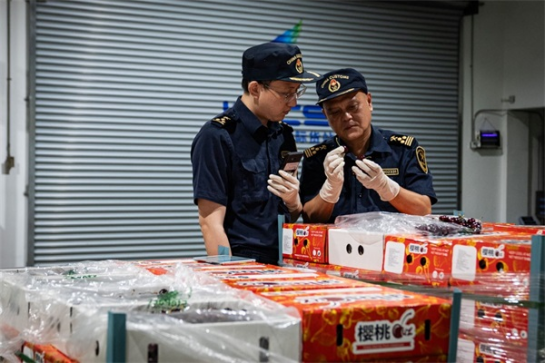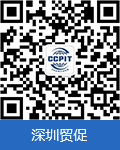SZ's trade with Central Asia up 7.4% 深圳对中亚贸易前五个月增长7.4%

Customs officers inspect fresh cherries from Uzbekistan at Shenzhen Bao’an International Airport on June 11. The airport’s fruit trade surged to 108 million yuan in the first five months of the year, up 49% from the same period last year. Courtesy of Shenzhen customs
At a factory in Shenzhen, workers are busy packing sleek, robotic coffee machines for shipment to Kazakhstan. It’s a scene that shows why their company, RobotAnno, has been operating at full capacity in recent months. The firm specializes in desktop robotic arms and AI-driven retail solutions.
"With increasing demand from international buyers, our company has expanded into Central Asian markets such as Kyrgyzstan and Uzbekistan this year," said Wang Rong, sales manager with RobotAnno. Its products, including robotic coffee machines, have been exported to over 70 countries and regions.
Shenzhen's foreign trade with Central Asian countries — Kazakhstan, Kyrgyzstan, Tajikistan, Turkmenistan, and Uzbekistan — reached 6.66 billion yuan (US$918 million) between January and May, a year-on-year increase of 7.4%. Exports alone rose by 21% year on year to 6.64 billion yuan.
An optimized cross-border logistics system has provided strong support for the expansion of trade between Shenzhen and Central Asia, according to Shenzhen Customs.
According to Huang Zibai, director of Shenzhen Unilumin Group Co. Ltd.'s global brand department, the demand for new energy vehicles, photovoltaic products, and smart home appliances has significantly increased in Central Asia countries.
Facilitating this trade is an increasingly robust logistics network. For example, the Shenzhen Bao'an International Airport has opened four direct cargo routes to Turkmenistan, Uzbekistan, and Kyrgyzstan.
Furthermore, a new freight route from Shenzhen to Almaty, Kazakhstan, has cut transport time to just six days — making it twice as fast as traditional rail. Launched earlier this year, the route is the first self-operated TIR cross-border service in the Greater Bay Area.
TIR stands for Transports Internationaux Routiers or International Road Transports. With 76 countries using the procedure, it is an international customs transit system to help save time and money for transport operators and customs authorities when moving goods across borders.
China joined the UN TIR Convention in July 2016 to simplify and streamline the administrative formalities of international road transport.
Editor/Li Jing
WeChat Editors/Cynthia, Yunfei



 粤公网安备44030002006641号
粤公网安备44030002006641号

